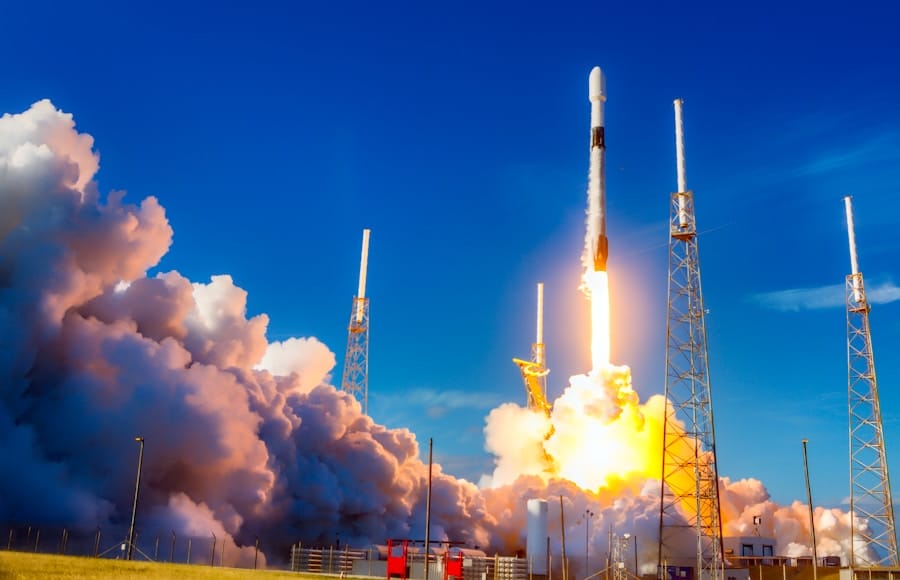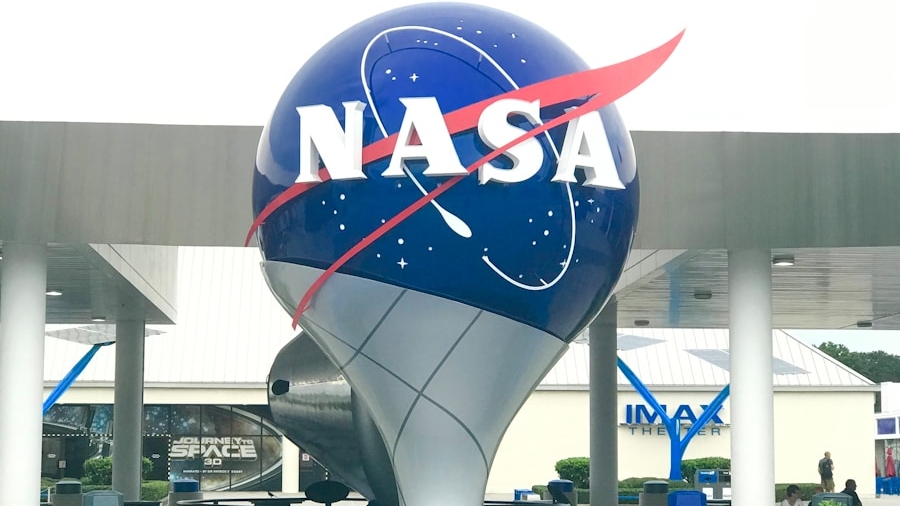The advent of artificial intelligence (AI) has revolutionized numerous sectors, and space traffic management is no exception. As the number of satellites and other objects in Earth’s orbit continues to grow, the need for effective management of this increasingly crowded environment has become paramount. Space traffic management refers to the processes and systems that ensure the safe and efficient operation of spacecraft, satellites, and other objects in space.
With thousands of satellites currently in orbit and many more planned for the near future, the potential for collisions and other hazards has escalated dramatically. AI offers innovative solutions to these challenges, enabling more sophisticated monitoring, prediction, and decision-making capabilities. AI’s integration into space traffic management is not merely a technological enhancement; it represents a paradigm shift in how we approach the complexities of orbital dynamics.
Traditional methods of tracking and managing space objects often rely on manual processes and limited computational power, which can lead to inefficiencies and increased risks. In contrast, AI systems can analyze vast amounts of data in real-time, identify patterns, and make predictions with a level of accuracy that far surpasses human capabilities. This transformation is crucial as we move toward a future where space is not only a domain for scientific exploration but also a bustling arena for commercial activities, including satellite communications, Earth observation, and even space tourism.
Key Takeaways
- AI is revolutionizing space traffic management by providing advanced solutions for collision prevention and traffic monitoring.
- Current challenges in space traffic management include the increasing number of satellites and space debris, as well as the complexity of coordinating movements in space.
- AI plays a crucial role in space traffic management by analyzing large volumes of data, predicting potential collisions, and optimizing spacecraft trajectories.
- Advancements in AI technology, such as machine learning and autonomous decision-making, are enhancing collision prevention capabilities in space traffic management.
- Implementing AI in space traffic management can lead to improved efficiency, reduced collision risks, and enhanced overall safety in space operations.
Current Challenges in Space Traffic Management
Orbital Debris: A Growing Concern
As of 2023, there are over 30,000 tracked objects in low Earth orbit (LEO) alone, including operational satellites, defunct satellites, and fragments from previous collisions or disintegration events. This growing population increases the likelihood of close encounters and potential collisions, which can have catastrophic consequences not only for the involved spacecraft but also for other satellites in proximity.
Tracking Systems Struggle to Keep Pace
The existing tracking systems struggle to keep pace with this rapid increase in orbital debris, leading to gaps in situational awareness. This lack of accurate and timely information hinders the ability to predict and prevent potential collisions.
Lack of Standardization Hampers Collaboration
The international nature of space activities means that various stakeholders—government agencies, private companies, and international organizations—must collaborate effectively to ensure safety. However, differing regulations and operational practices can create confusion and inefficiencies. For instance, while some countries have established guidelines for satellite decommissioning and debris mitigation, others have yet to adopt comprehensive policies. This inconsistency complicates efforts to develop a cohesive approach to managing space traffic.
The Role of AI in Space Traffic Management

AI plays a transformative role in addressing the challenges of space traffic management by enhancing data processing capabilities and improving predictive analytics. One of the primary applications of AI in this field is the development of advanced algorithms that can process vast datasets from various sources, including ground-based radar systems, telescopes, and satellite sensors. These algorithms can identify and track objects in real-time, providing operators with up-to-date information about potential collisions and other hazards.
Moreover, AI can facilitate better decision-making through machine learning techniques that allow systems to learn from historical data. By analyzing past collision events and near-misses, AI can identify risk factors and develop models that predict future encounters with greater accuracy. This predictive capability is crucial for timely interventions, enabling operators to execute collision avoidance maneuvers when necessary.
Additionally, AI can optimize satellite operations by suggesting optimal trajectories that minimize collision risks while maximizing operational efficiency.
Advancements in AI Technology for Collision Prevention
Recent advancements in AI technology have significantly enhanced collision prevention strategies in space traffic management. One notable development is the use of deep learning techniques to improve object detection and classification. Deep learning models can analyze images from space-based sensors or ground-based telescopes to identify objects with high precision.
This capability is essential for distinguishing between operational satellites and debris, which is critical for effective tracking and risk assessment. Another promising advancement is the integration of AI with simulation technologies to model potential collision scenarios. By simulating various orbital configurations and potential interactions between objects, AI can help operators understand the dynamics of close encounters better.
These simulations can be used to train AI systems to recognize patterns associated with high-risk situations, allowing for proactive measures to be taken before a collision occurs. Furthermore, advancements in natural language processing (NLP) enable AI systems to communicate findings and recommendations clearly to human operators, facilitating informed decision-making.
Implementing AI in Space Traffic Management
The implementation of AI in space traffic management involves several key steps that require collaboration among various stakeholders. First, there must be a concerted effort to standardize data formats and sharing protocols among different organizations involved in space operations. This standardization will enable AI systems to access diverse datasets seamlessly, enhancing their ability to analyze information comprehensively.
Next, developing robust AI models requires extensive training data that accurately reflects the complexities of space traffic scenarios. This necessitates collaboration between government agencies, private companies, and academic institutions to gather historical data on satellite operations, collision events, and debris tracking. Once sufficient data is available, machine learning algorithms can be trained to recognize patterns and make predictions about future encounters.
Finally, integrating AI systems into existing operational frameworks will require careful planning and testing. Operators must ensure that AI recommendations align with human decision-making processes while maintaining accountability for safety-critical actions. This integration may involve developing user-friendly interfaces that allow operators to interact with AI systems effectively while retaining oversight over critical decisions.
Potential Benefits of AI in Space Traffic Management

Enhanced Safety through Collision Avoidance
One of the most significant advantages is enhanced safety through improved collision avoidance capabilities. By leveraging real-time data analysis and predictive modeling, AI can provide timely alerts about potential collisions, allowing operators to take proactive measures to avoid accidents.
Optimizing Satellite Operations
In addition to safety improvements, AI can optimize satellite operations by enhancing efficiency in resource allocation and trajectory planning. For instance, AI algorithms can analyze multiple factors—such as fuel consumption, orbital mechanics, and mission objectives—to recommend optimal flight paths for satellites.
Streamlining Operations and Fostering Innovation
This optimization can lead to cost savings for operators while maximizing the utility of their assets. Furthermore, by streamlining operations through automation, AI can free up human resources for more strategic tasks, allowing teams to focus on innovation rather than routine monitoring.
Ethical Considerations and Regulations for AI in Space Traffic Management
As with any technology that has significant implications for safety and security, ethical considerations surrounding the use of AI in space traffic management are paramount. One major concern is accountability—specifically, who is responsible when an AI system makes a recommendation that leads to a collision or other adverse event? Establishing clear guidelines regarding liability will be essential as organizations increasingly rely on automated systems for critical decision-making.
Moreover, there are concerns about data privacy and security when utilizing AI systems that process vast amounts of information from various sources. Ensuring that sensitive data is protected from unauthorized access or misuse will be crucial as these technologies become more integrated into operational frameworks. Additionally, there must be transparency regarding how AI algorithms make decisions; stakeholders should understand the underlying processes that inform recommendations to foster trust in these systems.
Regulatory frameworks will also need to evolve alongside technological advancements in AI for space traffic management. International cooperation will be essential in establishing standards that govern the use of AI technologies across different jurisdictions. Collaborative efforts among nations will help create a unified approach to managing space traffic while addressing ethical concerns related to safety, accountability, and data privacy.
The Future of AI in Space Traffic Management: Opportunities and Challenges
Looking ahead, the future of AI in space traffic management presents both exciting opportunities and formidable challenges. As technology continues to advance at an unprecedented pace, we can expect further innovations that enhance our ability to monitor and manage space traffic effectively. The development of more sophisticated algorithms capable of real-time decision-making will likely lead to even greater improvements in safety and efficiency.
However, these advancements will not come without challenges. The rapid proliferation of satellites—especially with the rise of mega-constellations—will continue to strain existing tracking systems and necessitate ongoing investment in infrastructure and technology development. Additionally, as more private entities enter the space sector, ensuring compliance with international regulations will become increasingly complex.
Ultimately, the successful integration of AI into space traffic management will depend on collaboration among governments, private companies, researchers, and international organizations. By working together to address technical challenges while prioritizing ethical considerations and regulatory frameworks, we can harness the full potential of AI to create a safer and more efficient environment for all space activities.
In a recent article on ENICOMP, it was reported that a Cryptopunks NFT bundle sold for a staggering $17 million in a Christie’s auction. This news highlights the growing popularity and value of digital assets in the art world.
Additionally, if you are interested in video editing, ENICOMP has compiled a list of the best software options for 2023. These articles showcase the diverse ways technology is shaping various industries, including art, content creation, and video editing, which are all relevant to the advancements in AI for space traffic management and collision prevention. Source
FAQs
What is AI in space traffic management and collision prevention?
AI in space traffic management and collision prevention refers to the use of artificial intelligence technology to monitor and control the movement of spacecraft and satellites in outer space. It involves the use of AI algorithms to analyze and predict potential collisions, as well as to optimize the trajectories of space vehicles to avoid such incidents.
How does AI help in space traffic management and collision prevention?
AI helps in space traffic management and collision prevention by processing large amounts of data from various space objects and identifying potential collision risks. AI algorithms can also be used to autonomously adjust the trajectories of spacecraft to avoid collisions, thereby enhancing the overall safety and efficiency of space operations.
What are the benefits of using AI in space traffic management and collision prevention?
The benefits of using AI in space traffic management and collision prevention include improved safety for space missions, enhanced efficiency in space operations, and the ability to handle the increasing volume of space traffic. AI can also enable real-time decision-making and autonomous collision avoidance, reducing the risk of accidents and the potential for space debris generation.
What are the challenges of implementing AI in space traffic management and collision prevention?
Challenges in implementing AI in space traffic management and collision prevention include the need for accurate and reliable data from various space objects, the development of robust AI algorithms for collision prediction and avoidance, and the coordination of AI systems with existing space traffic management frameworks. Additionally, ensuring the cybersecurity of AI systems in space is also a significant challenge.
What is the future outlook for AI in space traffic management and collision prevention?
The future outlook for AI in space traffic management and collision prevention is promising, with ongoing research and development efforts focused on enhancing the capabilities of AI systems for space operations. As the volume of space traffic continues to increase, AI is expected to play a crucial role in ensuring the safety and sustainability of space activities.

